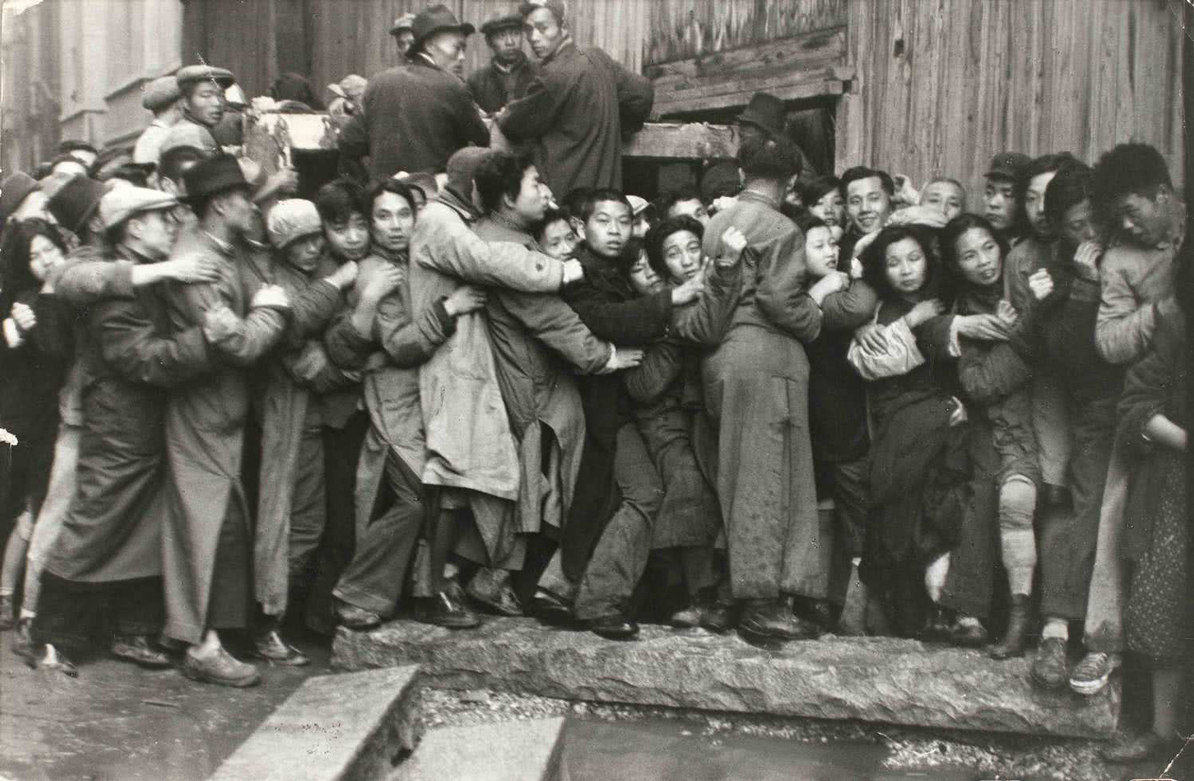Henri Cartier-Bresson
JUN.28.2014 ──────── SEP.07.2014

Crowd waiting in front of a bank to get gold during the last days of Kuomintang, Shanghai, China, 1948
Henri Cartier-Bresson Foundation Collection, Paris
© Henri Cartier-Bresson / Magnum Photos, courtesy of the Henri Cartier-Bresson foundation
Exhibition
JUN.28.2014 ── SEP.07.2014
Location
Recoletos Exhibition Hall
Paseo Recoletos 23, 28004 Madrid
This exhibition was the first major retrospective in Europe since the artist’s death. This retrospective displayed the full range of his work and the diversity of his career as a photographer, from the surrealist aesthetic to photojournalism as well as his intimate style in his last years.
This display invites us to admire Cartier-Bresson’s work, known as the “eye of the century” due to his role as a key witness to 20th century history. Through over five hundred photographs, drawings, pictures, films and documents, the exhibition covers the lengthy career of this great photographer, one of the most important of the 20th century and one of the key figures in modernity.
This exhibition, organized by the Centre Pompidou, Paris, in collaboration with Fundación MAPFRE and with the participation of the Henri Cartier-Bresson Foundation, gathered together works from more than 20 international collections, including the Cartier-Bresson Foundation in Paris, the Musée d´art Moderne de la Ville de Paris, the Cinémathèque Française, The Art Institute of Chicago, The Metropolitan Museum of Art, New York, the MoMa, New York, and the Philadelphia Museum of Art.
The exhibition
Henri Cartier-Bresson’s photographic work is the outcome of a combination of multiple factors: a certain artistic predisposition, dedicated and persevering study, the atmosphere of the times, his personal aspirations and his magnificent relationships. The author’s output began in the 1920s and was characterized by both his painting and photography work undertaken as a hobby. He developed this work and laid down certain milestones over time, such as his trip to Africa from 1930-1931.
All his work reflects his love of art, the time dedicated to reading or gazing at paintings in museums, the profound effect André Lhote’s teachings had on him and the relationship with his North American friends: Julien Levy, Caresse and Harry Crosby, Gretchen and Peter Powel. Together with the first of these friends, Cartier-Bresson discovered the art of composition, and in the company of the second, he discovered the photographs of Eugène Atget and the movement of the New Vision. Cartier-Bresson brings together all these diverse influences in his work.
The exhibition, organized chronologically and thematically, was organized into three focal points: the period between 1926 and 1935, marked by his relationship with the surrealist movement, his first foray into photography and his major trips around the world. A second section is dedicated to Henri Cartier-Bresson’s political engagement from his return from the United States in 1936 until his return to New York in 1946. The third sequence kicks off with the creation of the Magnum Photos agency in 1947, and stretches to the beginning of the 1970s, a time in which the artist stopped carrying out photojournalism.




